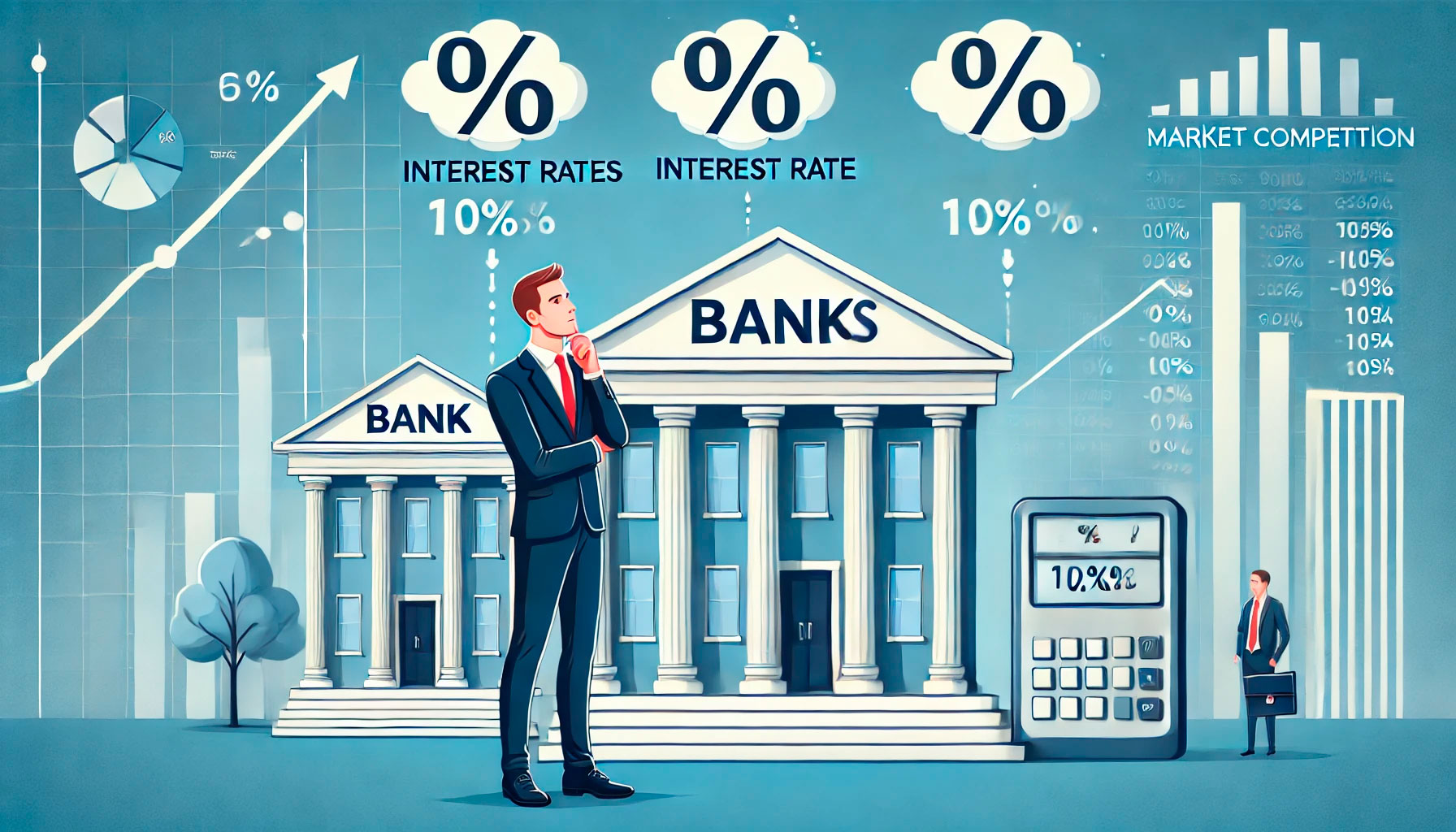When borrowing money, one of the most important factors to consider is the interest rate. The interest rate determines how much more a borrower will have to repay over the life of the loan, in addition to the principal amount borrowed. However, not all banks offer the same interest rate for similar loans, even when they are offering products with the same terms. There are several reasons why different banks have varying interest rates, and understanding these factors can help borrowers make more informed decisions about where to apply for a loan. In this article, we will explore the primary reasons why different banks offer different interest rates and how borrowers can use this information to find the best loan deals.
The Role of Risk in Determining Interest Rates
One of the primary reasons banks offer different interest rates on loans is the level of risk they associate with the borrower. When banks lend money, they assess the borrower’s ability to repay the loan and the likelihood of default. If a borrower is perceived as high risk—meaning there is a greater chance they may not be able to repay the loan—banks will charge a higher interest rate to compensate for the additional risk. This is why individuals with low credit scores or a history of missed payments are typically offered higher interest rates compared to those with strong credit histories and stable financial situations.
On the other hand, banks that perceive a borrower to be a low-risk borrower will typically offer lower interest rates. This is because they are more confident in the borrower’s ability to repay the loan on time, reducing the risk of default. In a competitive market, banks may lower their interest rates to attract more low-risk borrowers. This is why individuals with excellent credit scores often have access to better loan terms and lower interest rates, as they are seen as more reliable borrowers.
Market Competition and Pricing Strategies
Another key factor influencing the variation in interest rates between banks is the level of competition in the market. Banks operate in a highly competitive environment, and each institution strives to attract borrowers by offering the most attractive loan terms. In a market where there are many lending options, banks may lower their interest rates to attract customers and gain market share. Conversely, if the market is less competitive or there are fewer lending options, banks may feel less pressure to lower their interest rates, and they may choose to charge higher rates to maintain profitability.
Each bank also has its own pricing strategy based on its target customer base. Some banks may specialize in high-risk borrowers or those with lower credit scores, offering higher interest rates in exchange for providing access to credit. Other banks may cater to low-risk borrowers and offer more favorable loan terms, including lower interest rates. Additionally, some banks may offer promotional rates or introductory offers to attract customers in the short term, which may vary from their standard rates for loans.
Operational Costs and Bank Size
The operational costs associated with running a bank also play a significant role in determining interest rates. Larger banks with extensive branch networks and more resources may be able to offer lower interest rates due to economies of scale. These banks can spread their operational costs over a larger number of loans, which allows them to offer more competitive rates. On the other hand, smaller or regional banks may have higher operational costs relative to the number of loans they issue, which could lead them to charge higher interest rates to cover these costs.
Additionally, some banks may have different lending models based on their business structure. Online banks, for example, often have lower overhead costs because they don’t have the expenses associated with maintaining physical branches. As a result, online banks may offer lower interest rates on loans, as they have fewer operational costs to pass on to the borrower. Traditional banks, with their physical branches and in-person customer service, may charge higher interest rates to account for these additional expenses.

The Table: Impact of Different Factors on Interest Rates
The following table provides an overview of how various factors impact the interest rates offered by different banks. As the table shows, banks with different business models, target customers, and operational structures will have varying approaches to setting interest rates.
| Factor | Impact on Interest Rate |
|---|---|
| Credit Risk | Higher-risk borrowers are offered higher interest rates to compensate for the risk of default. |
| Market Competition | In a competitive market, banks lower interest rates to attract customers; in a less competitive market, rates tend to be higher. |
| Operational Costs | Banks with higher operational costs, such as large branch networks, may charge higher rates, while online banks with lower overheads can offer lower rates. |
| Bank Size | Larger banks with more resources may offer lower rates due to economies of scale, while smaller banks may charge higher rates due to limited resources. |
| Loan Type and Terms | The type of loan and its terms influence the interest rate. Secured loans generally have lower rates than unsecured loans. |
Regulations and Government Policy
Government regulations and monetary policies can also affect interest rates. Central banks, such as the Federal Reserve in the United States or the European Central Bank, influence interest rates by setting benchmark rates, such as the federal funds rate or the base rate. When central banks raise or lower their benchmark rates, commercial banks adjust their interest rates accordingly. If central banks increase interest rates to combat inflation, commercial banks tend to follow suit by raising their loan rates to reflect the higher cost of borrowing.
Additionally, regulatory requirements, such as reserve requirements or capital adequacy ratios, impact how much money banks can lend out and influence their lending rates. Banks must maintain certain levels of reserves to ensure liquidity and stability, and these regulations may affect the interest rates they offer to customers. In some cases, banks may raise interest rates to offset the costs associated with regulatory compliance.
The Role of Loan Terms and Conditions
Interest rates also depend on the terms and conditions of the loan. For example, long-term loans may have higher interest rates because the lender faces more uncertainty about the borrower’s ability to repay over time. Short-term loans, on the other hand, may offer lower interest rates because they are paid off quickly, reducing the lender’s exposure to risk. Additionally, loans with higher loan-to-value ratios or unsecured loans typically come with higher interest rates, as these loans present a higher risk to the lender.
In contrast, loans that are secured by collateral—such as mortgages or auto loans—often come with lower interest rates because the lender has the ability to recover the loan amount by seizing the collateral in case of default. Banks will typically offer better rates for loans with lower risk, while unsecured loans or high-risk loans will come with higher rates to mitigate the risk of lending.
The differences in interest rates offered by various banks can be attributed to a combination of factors, including the perceived risk of lending, market competition, operational costs, and the regulatory environment. Banks set their interest rates based on their business models, customer base, and overall economic conditions. As a borrower, it’s essential to shop around, compare loan offers, and consider not only the interest rates but also the loan terms, fees, and the level of service provided by the bank. By understanding the factors that influence interest rates, borrowers can make more informed decisions and secure the best loan terms available to them.



